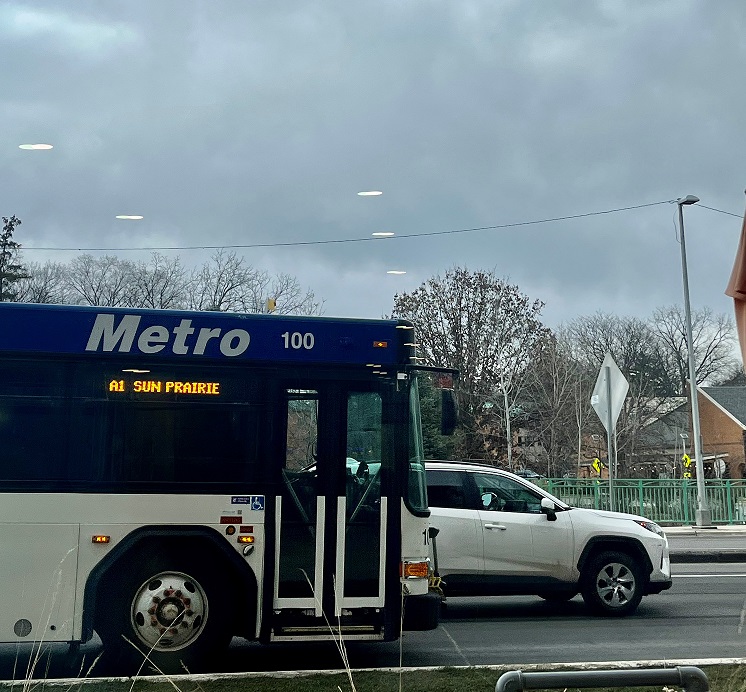New Resident Musings on Metro Transit in Early 2024
Alexandria Delehanty | February 27, 2024


As a fairly new resident to Madison, WI coming from Austin, Tx, I was initially thrilled with the public transit process. In Texas, safe public transit is hard to come by, even though the government teases that it will improve things every few years. So naturally, I have taken advantage of the transit system, and while Madison's offers commendable benefits, including accessibility and environmental sustainability, several areas warrant improvement to meet evolving needs and promote inclusivity. Madison's public transit system comprises a network of buses operated by Madison Metro Transit, serving as a lifeline for commuters, students, and tourists. One of its most significant benefits is accessibility, as buses traverse various neighborhoods, connecting residents to educational institutions, workplaces, healthcare facilities, and recreational destinations. This accessibility fosters social inclusion by ensuring that individuals from diverse socioeconomic backgrounds can access essential services and opportunities. Furthermore, Madison's transit system contributes to environmental sustainability by reducing carbon emissions and mitigating traffic congestion. By encouraging commuters to opt for public transportation over private vehicles, the city promotes eco-friendly practices and addresses concerns regarding air quality and greenhouse gas emissions. This commitment aligns with Madison's reputation as an environmentally conscious community dedicated to combating climate change and preserving natural resources. Despite these commendable attributes, Madison's public transit system faces several challenges that hinder its efficacy and accessibility. One prominent issue is the need for improved infrastructure and expanded services to accommodate the city's growing population and evolving mobility patterns. As Madison experiences demographic shifts and urban expansion, there is a pressing need to invest in transit infrastructure, including additional bus routes, enhanced frequency, and modernized facilities. Moreover, addressing issues of affordability and equity is essential to ensure that transit services remain accessible to all residents, irrespective of their socioeconomic status. While Madison offers reduced fares for students and seniors, more comprehensive fare subsidy programs and fare capping mechanisms could alleviate financial burdens on low-income individuals and families, thereby promoting equitable access to transportation services. Furthermore, enhancing the integration of technology within the transit system can streamline operations, improve user experience, and facilitate real-time communication between passengers and service providers. Implementing mobile ticketing options, providing accurate arrival time information through smartphone applications, and optimizing route planning algorithms can enhance the efficiency and convenience of Madison's public transit system. Additionally, prioritizing pedestrian and cyclist-friendly infrastructure, such as designated lanes and bike-sharing programs, complements the public transit network, offering alternative modes of sustainable transportation and promoting active lifestyles. By fostering a multi-modal transportation ecosystem, Madison can cater to diverse mobility needs while reducing reliance on single-occupancy vehicles and promoting healthier urban lifestyles. In conclusion, Madison's public transit system serves as a cornerstone of the city's urban infrastructure, providing vital mobility solutions while promoting environmental sustainability and social inclusion. To maximize its potential and address evolving challenges, concerted efforts are required to invest in infrastructure upgrades, enhance affordability and equity, leverage technology advancements, and promote multi-modal integration. By prioritizing these initiatives, Madison can cultivate a more resilient, equitable, and sustainable transportation network that enriches the lives of its residents and fosters the city's continued prosperity and vitality. |